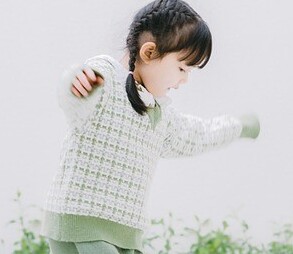
Positive reinforcement can be a game-changer in early education, setting the tone for a child’s future learning journey. It’s more than just giving rewards; it’s about recognizing and encouraging desirable behavior. This tool helps in shaping the behavior we wish to see in young learners.
Historically, educators have leaned on positive reinforcement because it’s a strategy rooted in behavioral psychology, with proven benefits acknowledged by countless studies. It’s known to create a supportive environment where children feel valued and eager to participate.
Teachers and parents play a crucial role here. They’re not just role models but also active facilitators of positive reinforcement. By giving praise, offering physical rewards, or even giving extra playtime, they’re helping to cement desirable habits and behaviors.
It’s essential to distinguish between positive reinforcement and other methods like punishment or negative reinforcement. While punishment might stop unwanted behavior temporarily, positive reinforcement strengthens the voluntary display of positive actions, making them more likely to persist.
Effective Positive Reinforcement Techniques for Young Learners

Getting creative with techniques is key when it comes to positive reinforcement for kids. The little ones thrive on tangible rewards like stickers, toys, or even a favorite snack. But don’t underestimate the power of intangible rewards like words of encouragement or a fun activity. Choosing what works can depend on the child’s personality and what motivates them.
Preschool and kindergarten settings offer a unique playground for these techniques. A simple well-done can work wonders. Tailoring reinforcement to fit the class vibe or a child’s unique needs can make all the difference. Some children respond better to verbal praise, while others light up at the promise of a new sticker.
Each classroom is different, and what works in one might not fly in another. It’s a good idea to adapt the techniques to match the style and dynamic of the group. It might take a bit of trial and error to get it just right, but that’s part of the fun!
Challenges? Oh, they’re there alright. Consistency is a big one. It’s all about keeping a steady pace with reinforcement. Finding the balance between encouragement and granting rewards is crucial. And let’s not forget, some days are just tougher than others, but showing patience and persistence is part of the process.
Fostering Emotional and Social Development Through Reinforcement

Positive reinforcement isn’t just about teaching ABCs; it’s a powerful tool for nurturing emotional well-being. Kids thrive in environments where good vibes are recognized and celebrated. Seeing their efforts acknowledged boosts emotional health and encourages more of the same awesome behavior.
Social skills bloom beautifully when kids see that cooperation and helping others brings positive outcomes. Reinforcement can be the best cheerleader for behavior like sharing or teamwork. So, high-fives and cheers aren’t just fun—they’re building blocks for social interaction.
Simple games and activities can transform how kids see their actions. Think role-play games where sharing toys or taking turns gets rewarded with a moment in the spotlight or a favorite book read aloud by the teacher. These experiences solidify the connection between positive actions and the good feelings they bring.
Building self-esteem with positive reinforcement is like stacking little bricks. A ‘you did it!’ or ‘awesome job!’ goes a long way in letting a child know they’re seen and appreciated. Over time, this not only builds their confidence but also resilience, preparing them for challenges ahead.
Long-term Benefits: Setting the Stage for Future Success
Positive reinforcement in early education lays solid bricks for future achievements. Kids who frequently receive encouragement often carry these positive experiences into their school years, showing higher academic achievements and better social skills.
Parents can play a huge role at home by continuing this approach. Keeping that flow of positive reinforcement outside of school assures kids that their good behavior matters everywhere, not just in the classroom.
Lifelong skills like empathy and responsibility often sprout from the seeds of early positive reinforcement. Kids learn quickly that being patient or showing kindness brings rewards, and these traits stick with them, shaping how they deal with others as they grow.
Stories of success aren’t hard to find. Many studies back it up: children who grow up in environments where their positive efforts are recognized often thrive, building lives filled with achievements. They step into the world better prepared to tackle challenges and embrace new experiences with optimism.

Positive reinforcement definitely plays a powerful role in shaping early behavior, and I appreciate how this topic emphasizes encouraging desired actions rather than just correcting unwanted ones. I’m wondering how you balance positive reinforcement with the need to set firm boundaries, especially in group settings where consistency can be tricky. Do you find that certain types of reinforcement (verbal praise, reward systems, etc.) are more effective for specific age groups or temperaments? Also, have you observed any long-term behavioral differences between children who receive consistent positive reinforcement and those who don’t?
yes i did observe it